|
For nearly 130 years, the field of psychology has been confused about the nature of consciousness. Researchers have confounded consciousness with cognition, which is why the role of consciousness in the creative process is not more well-understood.
The problem dates back to William James, whose 1890 textbook Principles of Psychology included a chapter entitled "The Stream of Thought." In that chapter, James identifies "five characters in thought" that are still accepted as the defining features of consciousness. "I use the word thinking," James wrote, "for every form of consciousness indiscriminately." Alas, this is where the confusion begins, because thinking and all other cognition, including attention, perception, memory, and language, are NOT the same as consciousness. Yes, the two can co-exist, but there is evidence of cognition in the absence of consciousness, on the one hand (the "cognitive unconscious"), and consciousness in the absence of cognition, on the other. The latter claim does not sit well with intellectuals, who have trouble with the idea of consciousness existing in the absence of thought. Yet, millions of meditators profess to have that exact experience on a regular basis. What happens when we silence our minds in meditation? We may stop existing as independent entities, but we do not stop existing altogether! There is still an "I AM," a sense of pure essence. We can just be, without thinking or knowing anything at all. This mental silence is not just a reality. It is crucial to creativity. As Pope John Paul II stated, "Every great work is born in silence." Such silence lets old ways of thinking fall away so that new ones may arise. It also connects us with the source of all creativity, which is pure formless consciousness. All form--including the set of thoughts that occupy our minds--emerges from formlessness and returns to it eventually. Deep Creativity attempts to correct a misconception that has plagued the field of psychology for more than a century. Until creativity researchers come to a new understanding of consciousness, the creative process will remain an elusive mystery to them.
0 Comments
March 16, 1987. In a flash of inspiration, I caught a brief glimpse into the deepest layers of reality. That moment shaped my life. I wanted to know everything about what I had experienced. That led me to devote my life to understanding the nature of inspiration.
Three decades later, here is what I can tell you about inspiration. For a moment, we come into the most intimate contact possible with these three fundamental truths: 1. There is only one consciousness—a unitary awareness that interconnects all things. This is the Creator of the universe—the source and ultimate essence of all creation. The Upanishads state: In the beginning was only Being, One without a second. Out of himself he brought forth the cosmos And entered into everything in it. There is nothing that does not come from him. Of everything he is the inmost self. 2. All of creation exists within that awareness and is imbued with it. The consciousness of the Creator abides in all thoughts, and there is no difference to be had between thoughts and things. To seek out an objective reality outside of our subjective thoughts is a pointless exercise, as quantum physicist Erwin Schrodinger pointed out: "The world is given to me only once, not one existing and one perceived. Subject and object are only one. The barrier between them cannot be said to have broken down as a result of recent experience in the physical sciences, for this barrier does not exist." 3. The cyclical dance of creation and destruction unfolds within that awareness. Everything emerges from the awareness of the Creator and then merges back into it. But in truth, nothing can ever be created or destroyed. The act of creating is a wonderful illusion because everything that ever was or ever will be is here right now. The only thing that ever changes in the creative process is the contents of our own minds. These three fundamental truths are captured in the creative trinity: Creator-creating-creation. If we maintain an awareness of that trinity and what it signifies, we can live in the space of inspiration. Over the next several weeks, I will share some specific ideas for doing that. You can also tune into my YouTube channel.
You probably have known moments of regret and disappointment. Perhaps you have felt despair about the direction your life has taken. Or you may have wondered about missed opportunities: the "what ifs."
I have devoted 30 years of my life to understanding creative inspiration because it reminds me how everything can change in an instant. In these introductory remarks to a talk I gave at IONS Austin on April 3, I describe a few profound moments of inspiration that changed the world. Although you may not realize it, you are just one flash away from a life of inspiration. In the blink of an eye, you come into the most intimate contact possible with a limitless source of creativity. From this encounter, you will come away with the resources to create your masterpiece! The masterpiece to which I am referring is YOUR LIFE. This is the most important work of art any of us can create. Sure, it would be nice to write books that influence an entire generation, make films that capture the imagination, or generate images that touch people's hearts. But inspired art has always emerged from inspired experience. This is why Deep Creativity urges readers to live outside the box. Beyond the limits of judgment, expectation, and conventionality, you will find entire realms of possibility at your disposal. Creative inspiration is not an esoteric idea that pertains only to great artists and innovators. In a moment of inspiration, you can discover your quintessential nature, which is more expansive and beautiful than you might have imagined. Now, the challenge is to live in that space of inspiration, which is why the theme of this website is: STAY INSPIRED! In the weeks to come, I will feature other excerpts from my Austin talk. You can watch and listen to the presentation in its entirety right here: 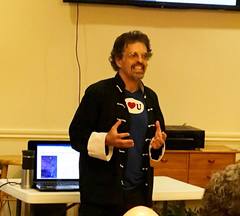 This week, I had the great pleasure and honor to spend time in Austin, Texas, where I did a presentation on Deep Creativity for the local Institute of Noetic Sciences (IONS) group on Tuesday (4/3) and then led a Global Chant circle at the Unity of the Hills Church on Wednesday (4/4). What I discovered during my brief stay is a very thriving spiritual community that is making significant advances in a number of areas related to consciousness and mind-body health. At the heart of that community are Joe and Lynne Lam, my very gracious hosts. Joe heads up the IONS Austin group and is always looking for ways to bring people together. The folks he is attracting include some of the most fascinating healers, thinkers, and innovators I have had the pleasure to meet. Their work is so groundbreaking that I want to share a little of it with you: 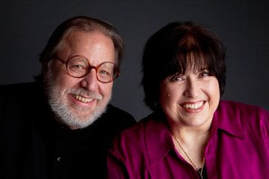 Chuck and Karen Robison run a website called "What if it Really Works?" which features interviews with pioneers of what they call the "new spiritual culture," including Marianne Williamson, Bruce Lipton, and Tom Campbell. Chuck is a former United Nations Chaplain and Karen served as a youth minister for one of the largest New Thought churches in the U. S. They are also the co-authors of The Quantum Conspiracy. 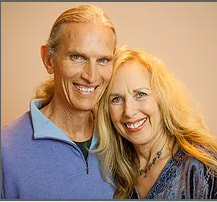 Richard Massey, M.D. and Meridian Grace, N.D. have a shared practice called Awakening Health that addresses major health issues by looking at the underlying relationship among psychological, spiritual, and biochemical factors. Their groundbreaking work attracts clients from all over the world, and their commitment to this healing work is truly inspiring. If I had a life-threatening health issue, I would seek out their expertise without hesitation. 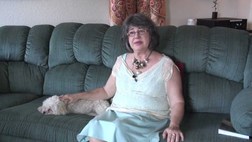 Anne Beversdorf is a vedic astrologer and the author of Vedic Secrets to Happiness, which uses simple karmic remedies to help resolve imbalances in virtually any aspect of a person's life. Besides that, she also uses a technique called Family Constellations to address ancestral factors that can contribute to mental and physical health issues. I found Anne's work to be brilliant and insightful. 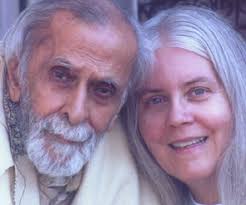 There are so many other wonderful people I met in Austin, whose work I intend to discuss in future blog posts. It was a great honor for me to meet Susan Raja-Rao, the wife of the brilliant Indian novelist and scholar, Raja Rao. I was especially touched when she told me that her late husband would have loved the ideas in Deep Creativity. Susan gifted me with a collection of Raja Rao's writings that I have just started to read. His ideas about Vedanta, Indian culture, and the search for truth and happiness resonate deeply for me. 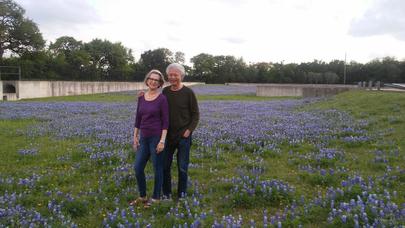 Finally, I want to share a few brief thoughts about Joe and Lynne Lam, pictured here in a field of blue bonnets near their home. They are the kind of open, supportive and loving people around whom spiritual communities can arise and thrive. 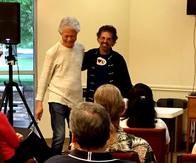 Joe's enthusiasm is absolutely infectious! When he introduced me to the IONS group on Tuesday evening, he did it with such warmth and humor that it set the tone perfectly for what I wanted to share with them that night. I am grateful to Joe and Lynne for making my trip to Austin so memorable. And of course, I am looking forward to my next visit! |
I want to hear from you! Please share your questions and comments. And sign up for my newsletter, where I will pass along the insights, ideas, and inspiration that come my way.
Contact me:Archives
November 2023
|
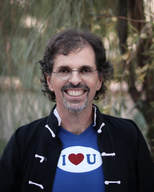
 RSS Feed
RSS Feed
